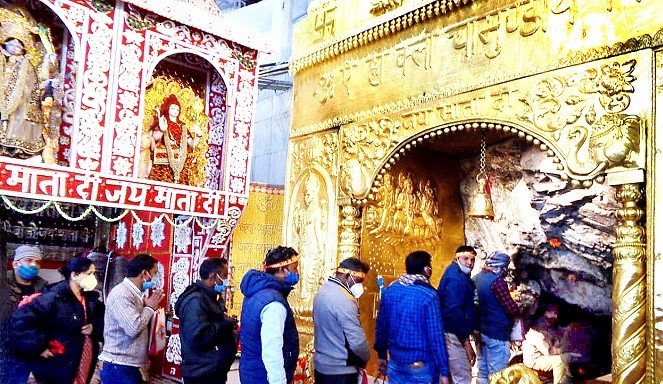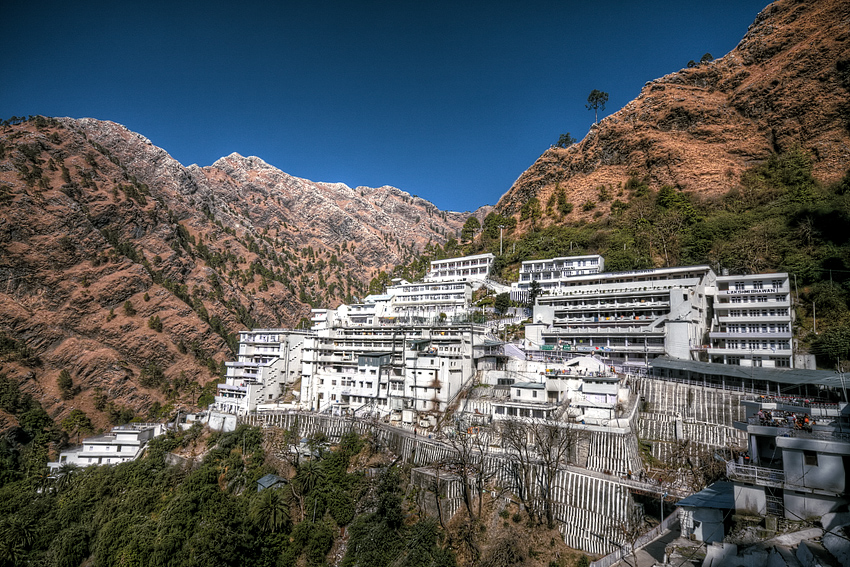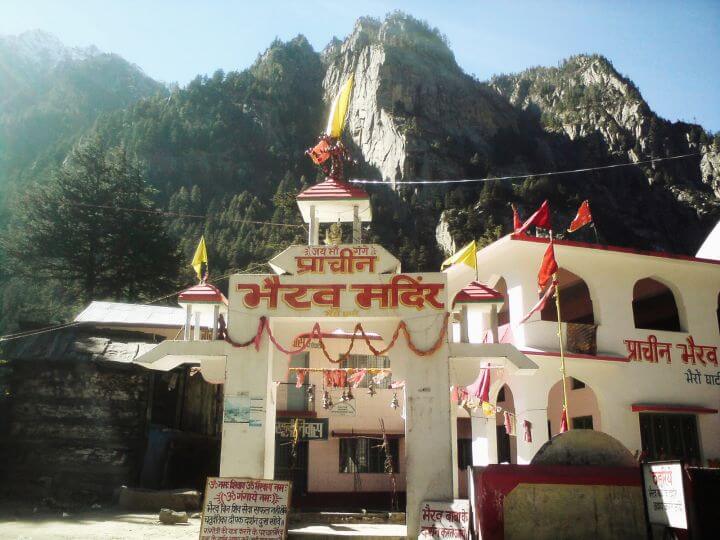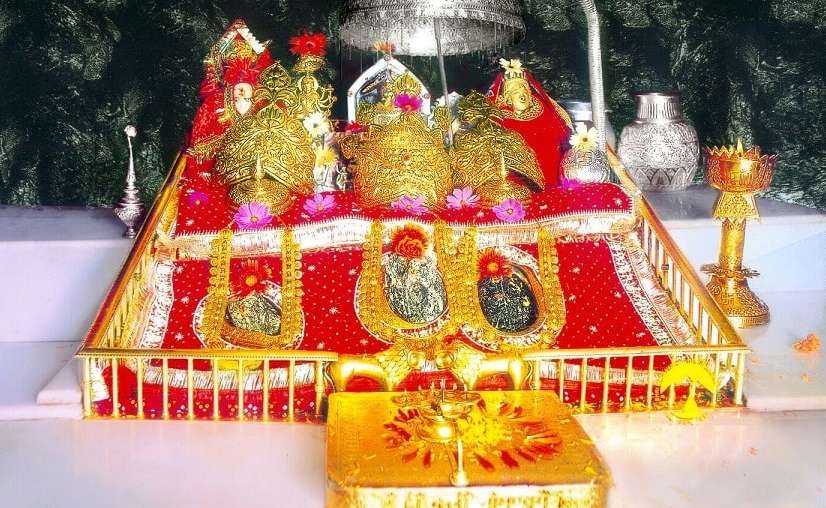


Vaishno Devi Temple
The Vaishno Devi Temple is an
important Hindu temple dedicated to Vaishno Devi
located in Katra at the Trikuta Mountains about 45 Kms from Jammu
City. The
temple is one of the 108 Shakti Peeths dedicated
to Durga
ji, who is worshipped as Vaishno Devi. It is one of the most visited
pilgrimage centers of India. Every year millions of visitors visit the
temple. During festivals like Navaratri,
the count even increases to more than one crore visitors. Vaishno Devi
Temple is one of the richest temples in India. Authors Michael Barnett and
Janice Gross Stein say, "Mata Vaishno Devi Shrine in Jammu has an annual
income of about $16 million, mainly from offerings by devotees".
Many prominent saints such as Vivekananda have visited this temple.
Navaratri and Diwali are the two most prominent
festivals celebrated in Vaishno Devi Temple. The management of the temple was taken
over by the Jammu and Kashmir government through Shri Mata Vaishno devi Shrine
Act. The committee nominated by the state government administers the temple and
has nine members on its board.
Author
Abha Chauhan identifies Vaishno Devi with the power of Vishnu as well as the
incarnation of Lakshmi. Author Pintchman identifies with great goddess Mahadevi and
says Vaishno Devi contains all powers and is associated with the entire
creation as Mahadevi. Pintchman further states that, "Pilgrims identify
Vaishno Devi with Durga (a form of Lakshmi)—
whom Punjabis also name Seranwali.
Pilgrims
travel from the city of Jammu to the town of Katra, which is about 45 Kms from Jammu
by road. From Katra, starts the uphill journey to the Vaishno Devi Temple
on foot, about 13 Kms. While on the way near the Trikuta mountain is the
Banganga River. It is said that Vaishno Devi shot an arrow at the ground and
brought forth the Ganga water to quench the thirst of Hanuman Ji. After
Hanuman Ji disappeared, Vaishno Devi washed her hair in the water. The Banganga
River is also known as the Balganga River, since "Bal" means
hair and "Ganga" is synonymous with the Holy Ganga River. After
Banganga is the Charan Paduka temple.
There
is a story that Bhairav Nath, a famous Tantric, saw the young Vaishno Devi at
an agricultural fair and started following her. Vaishno Devi fled into Trikuta
hills to escape his advances. Once Vaishno Devi stood on a rock to look at Bhairavnath,
This rock supposedly contained her footprints. Her footprints are worshipped in
this temple. After having a darshan of Charan Paduka, Pilgrims come across the
Ardha Kunwari Temple. Vaishno Devi meditated in this cave for 9 months, to
escape Bhairav Nath. After having a darshan of Ardha Kunwari, the pilgrims go
to the Bhairav Nath temple. It is said that after Vaishno Devi killed Bhairav
Nath, Bhairav Nath realised his mistake and pleaded for forgiveness. Vaishno
Devi blessed him by saying that if pilgrims did not have darshan of his head,
their pilgrimage will not be fruitful. Pilgrims have a darshan of Bhairavnath's
head before going to the Bhavan or Vaishno Devi's Temple. Pilgrims go inside
the temple to have a darshan of the 3 pindikas (rocks) which represent Vaishno
Devi.
The Appearance of Vaishno Devi to Shridhar and the story of
Bhairav Nath
Professor
and author Tracy Pintchman narrates the story as, "About nine hundred
years ago Vaishno Devi appeared in the form of a young girl and commanded a
Brahmin named Shridhar from the village Hansali (next to present day Katra) to
hold a feast (bhandara) for local people near Bhumika stream. Vaishno
Devi later manifested into 3 small rocks (pindikas) and stays there to the
present day. Shridhar began doing puja to
the pindikas at the cave, and his descendants continue to do so even
today".
This religious place is considered
the most important Shaktipeeth as it is believed; here the skull of the Goddess
Sati fell.
At Mata Vaishno Devi Cave, the
goddess is in the form of a five and a half feet tall rock which has three
heads or the Pindies. On Mata Vaishno Devi pilgrimage, devotees make
traditional offerings to Mata of chunri (a red coloured drape), sarees, dry
fruits, silver or gold ornaments, flowers etc.
A 13-km trek from Katra town leads to
Mata Vaishno Devi pilgrimage site where the goddess manifests herself in the
natural rock formation (holy pindies) in the sanctum sanctorum (cave). A
tunnel was used by the devotees to reach the sanctum sanctorum of this holy
site in Jammu. However, due to its narrowness, two new tunnels are built that
help in the swift movement of pilgrims who come in queues here.
There is a helicopter service from
Katra to Sanjhichhatt, from where the shrine is just 2.5 km away.
Mata Vaishno Devi Temple is open
throughout the year; however, the best time to visit is between March and
October. Devotees also like to plan their pilgrimage during the holy time of
Navratras.
Things to Know Before Visiting Mata
Vaishno Devi Temple
·
A trek of 13 km takes one to Mata
Vaishno Devi, however for those who are unable to walk, ponies are also
available.
·
A ropeway is constructed between Mata
Vaishno Devi Cave and Bhairon Ghati.
·
A yatra slip has to be obtained from
Yatra Registration Counter near Bus Station in Katra. One is not allowed to
visit Mata Vaishno Devi without the yatra slip.









